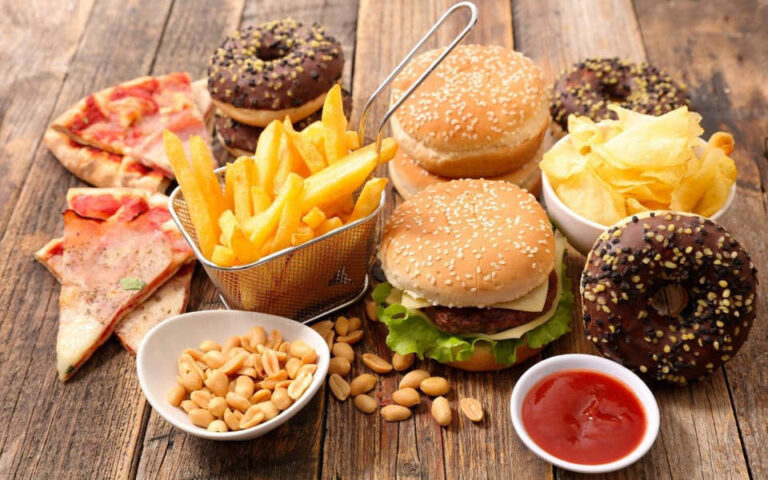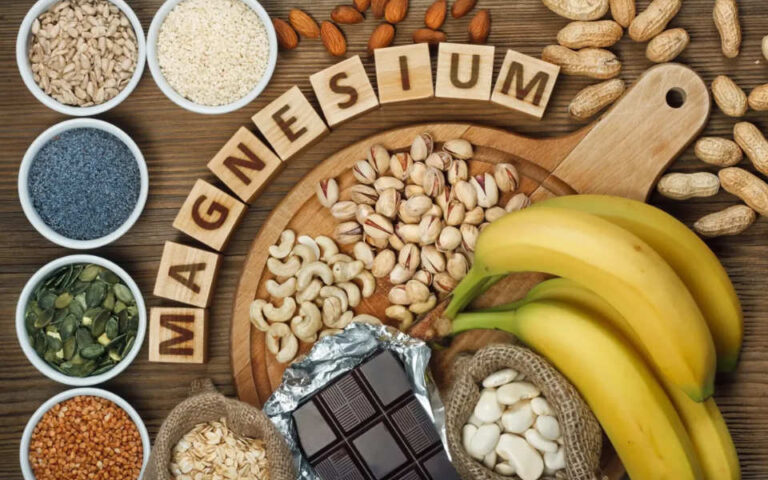Superfoods and health are synonymous, but what are superfoods exactly? Today we look at 22 top superfoods with exceptional health benefits. Can adding these superfoods to our daily diet improve our health? We will find out.
When you read or hear the term “Superfoods” what do you think of?
- Do you think of strange, predominantly South American, Indian, Asian, or African roots, fruits, nuts, seeds, and berries?
- Do you think of all the common fruits, grains, and vegetables we are meant to eat daily, to maintain optimal health?
- Or do you think of the 1000s of powders, shakes, snack bars, and supplements that have been produced from, and contain extracts of, these potent plant-based “miracle” foods?
You would be correct on all three counts.
An industry has grown up around this world, Superfoods, and we have become familiar with many fruits and vegetables that we normally would never find in our local farmer’s markets and whole food stores.
Thanks to powerful marketing campaigns and the popularity of a wide range of specialized diets, this buzzword has become an everyday concept. And the “Superfoods Industry” market continues to burgeon exponentially.
Thanks to technology we can harvest and process these superfoods with the least amount of compromise to both the taste and the nutritional values.
So the question is, “How do we define Superfoods”?
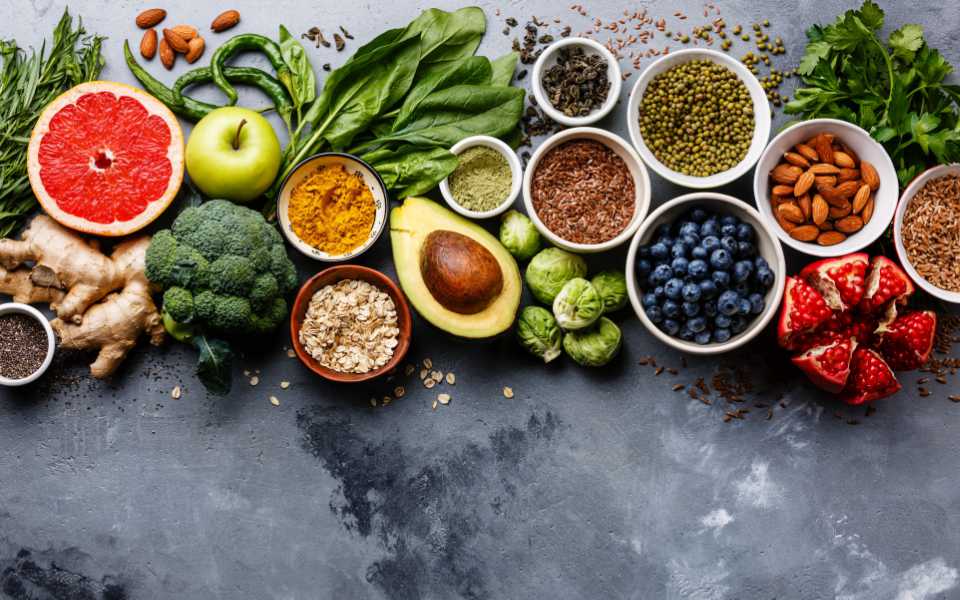
What are Superfoods?
Besides the fact that superfoods are
- nutrient-dense,
- anti-inflammatory,
- and high in antioxidants.
- They are also colourful.
Superfoods are plants that contain a combination of potent polyphenols. Each group of superfoods, and each type of superfood, has its own unique nutrient profile. Certain superfoods have specific benefits. But as a whole, they are the foods we should be eating every day, for optimal health.
Polyphenols are plant-based chemicals, also called phytonutrients or phytochemicals, and these chemicals get converted into other forms of nutrients that are accessible to us once they get digested.
When we look at superfoods the emphasis is on the polyphenols as opposed to the vitamins and minerals of the plants. Often these compounds convert into vitamins. For instance, orange fruits and vegetables contain carotenoids that are high in beta-carotene, which converts to vitamin A. Vitamin A is essential to eye, skin, and hair health.
Berries and other plants that are purple are usually high in anthocyanins, which is a flavonoid. Flavonoids may not be the most powerful of the antioxidants but they have potent attributes. Red grapes contain resveratrol and green tea contains catechins.
So when we find out that entire eating plans have been developed around superfoods we are not surprised that they are grouped according to colour.
There are over 25 000 phytonutrients. Some of the common ones that may sound familiar include:
- Phenolic acids –
- Flavonoids – isoflavones, anthocyanidins, flavones, flavonols (quercetin), catechins, hesperidin, flava-3-nols
- Carotenoids – carotenes, cryptoxanthin, lycopene, lutein, zeaxanthin
- Ellagic acid –
- Resveratrol –
- Glucosinolates –
- Phytoestrogens –
Polyphenols are antioxidants. Superfoods are high in antioxidants. Because of these compounds, there is a long list of superfood benefits. Some of these claims can be backed by science while others still need to be researched further.
But the peoples who have been including these superfoods in their diet are living proof that foods high in antioxidants contribute to longevity.
Superfoods can be antimicrobial, antihistamines, anti-carcinogenic, anti-ageing, and anti-inflammatory. Often they have mood and memory-enhancing effects. Superfoods have phenolic compounds that:
- Keep the body from ageing thus extending lifespan.
- Support the immune system thus protecting the body from infections (fungal, viral, and bacterial) and repair cell damage caused by free radicals, which lead to cancers.
- Keep the blood (circulatory system) flowing at the right pressure, keep the blood oxygenated and at the right viscosity, to prevent conditions like atherosclerosis (hardening of the arteries) and venous insufficiency. Both these conditions increase the risk of heart disease, strokes, and peripheral vascular disease.
- Prevent or reduce inflammation. Inflammation is a leading cause of many more serious diseases like CVD (cardiovascular disease), T2D (type 2 diabetes), and metabolic syndrome.
- Help the body to maintain a healthy weight.
History Of Superfoods
The term “superfood” was initially promoted to attract attention to the potency and benefits of whole and natural foods. The health and wellness industry realised that among consumers, obesity, Type 2 Diabetes, and a host of other lifestyle diseases were becoming prevalent. For many people, their diets had become so polluted with processed foods, take-away foods, convenience meals, and artificial shakes and powders that they were getting sick from the food they were eating.
The industry we have today has cemented the term superfood firmly into our daily vocabularies. But in the overuse of the word, the original meaning was lost. Today “Superfoods” is a term associated with certain fruits, herbs, spices, grains, and vegetables. The term was created in reaction and response to the blatant disregard people seemed to be having when it came to their diets. This seemed to be Western culture trying to find an instant cure for a lifetime of bad eating habits. Many lifestyle diseases are directly linked to bad diets and sedentary lifestyles, as this study shows. In another study it was shown that lifestyle habits and bad diet increased the risk of CVD in young overweight, and obese, women.
As lifestyle diseases, like heart disease, obesity, Type 2 Diabetes (T2D), and metabolic syndrome, grew statistically, the West began to look to the East and to the South and to the North. It was discovered that some cultures did not suffer from these conditions. Not only were they healthier they also lived longer. Studies were done on these peoples, where they lived, their lifestyle, their habits, and most importantly, their diets.
These regions are now classified as Blue Zones.
Are Superfoods Really Good for You?
Superfoods in their natural state are very beneficial to our health. But do they still have the same health-giving properties that they had before they were harvested, processed, and packaged for our consumption?
The good news is that advances in technology mean these fruits can be dried and crushed into powders. They can be freeze-dried and put into frozen storage. And they can have their pulp and seeds separated for use in individual products, like superfood powders and frozen pulp. The seeds from superfoods are often rich in oils and proteins. They get turned into supplements like superfood powders, capsules, oils, or frozen foods. Some of these products are of high quality and remain beneficial. But many products are inferior and try to pass as “superfoods” when in fact it is just clever marketing. The best superfoods are still fresh whole foods grown locally.
In some cases, after processing, the antioxidant score rises and dried powders show higher levels of antioxidants than the fresh equivalent. This study showed that the freeze-drying method actually retained the naturally occurring bioactive compounds. In this study, it was shown that while freeze-drying maintained the colour and vitamin C content of green tea, it was oven drying (at 60⁰C) that produced an increase in phenolic, flavonoid and antioxidant activity.
The techniques employed to get them from farm to factory to us ensure that the antioxidants and other active ingredients are not compromised. Antioxidants are not destroyed during cooking.
What is an ORAC Value and are PAC Levels Guaranteed?
The test used to ascertain the levels of antioxidants is called the ORAC (Oxygen Radical Absorbance Capacity) test. Due to certain shortcomings, it was withdrawn by the USDA in 2012. At the time it was believed that to maintain a functioning immune system, 3,000 ORAC units had to be consumed daily. 1 cup of blueberries contains 9,000 ORAC units. This shows that it is relatively easy to reach your daily intake of antioxidants when you eat a plant-based diet using superfoods.
Food labels are not permitted to promote the antioxidant benefits of superfoods according to their ORAC units.
PAC stands for proanthocyanidins. You get insoluble and soluble PACs. The same problem occurs because the PACs are only measurable when fresh juice is used. Products (like superfood powders) may not state how much PAC is in a product. It is agreed that 36 mg is the needed dose for antioxidants to be beneficial. This amount can’t include insoluble measurements as the insoluble PACs are ineffective as antioxidants. And as mentioned above, the PACs can only be measured using fresh juice.
Despite this, powders still get used extensively by people for the following health benefits:
- Supplementing one’s diet with superfood powders that are high in antioxidants to boost immunity.
- Taking superfood protein powders pre and post workouts.
- Taking superfood protein powders to build muscle.
- Mixing smoothies with various superfood powders for weight loss.
- Adding superfood powders to smoothies to boost one’s immune system after illness or surgery.
Smoothies are a fast and easy way to get extra nutrients into your daily diet.
Often the powders are plant-based, high-protein superfoods. For people on a plant-based, or vegan diet, the addition of protein superfood powders is a practical way to boost protein levels. Superfood protein powders deliver proteins that are highly digestible (in powder form). For example, whey (derived from milk) is 100% bioavailable, and hemp seeds are 66%, compare these to peanuts that are only 49%.
What is the Superfood Diet?
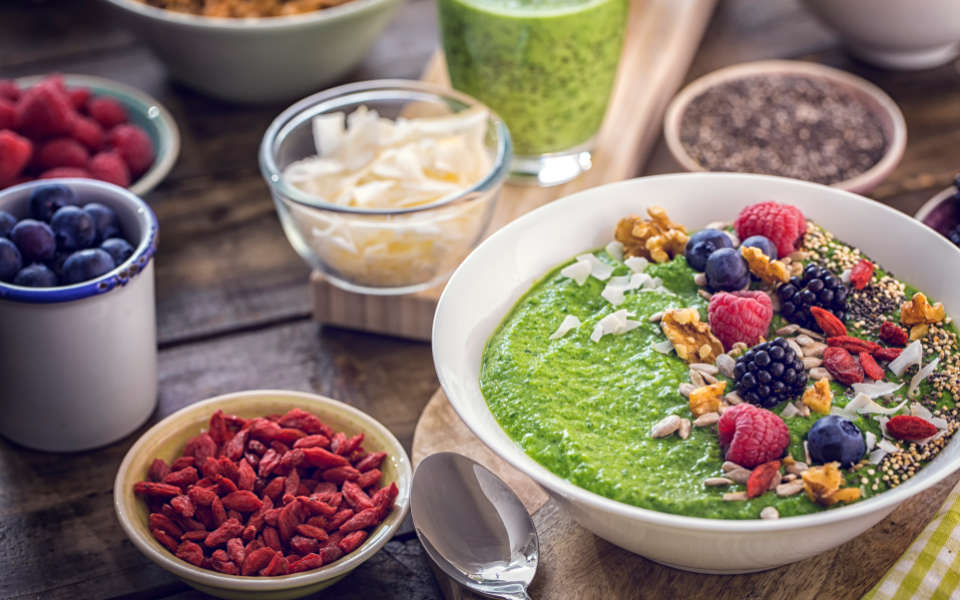
The Superfood Diet is based on eating fresh and whole foods. So whatever you eat must be free-range, organic, and as fresh as possible. Fruit, grains, eggs, dairy, meat, and vegetables are allowed. But the emphasis is on eating a plant-based diet that is organised by colour.
Dr. Will Cole, a Functional Medicine practitioner, created the Ketotarian Diet. The Ketotarian Diet is plant-based, high fat, low carb, and geared to reduce inflammation, burn fat, increase energy levels and promote weight loss. Eating foods from the Superfoods colour chart can make following this diet even healthier. The Ketotarian Diet also promotes eating pro and prebiotic vegetables, and focuses on gut health.
Dr Mark Hyman, another Functional Medicine practitioner, promotes an elimination diet, a 10-day reset. Especially good when you are starting out. For 10 days all added sugar, dairy, meat, eggs, and wheat (gluten) is forbidden. After the ten days, you can gradually add them back. This method indicates whether you have an intolerance or allergy to certain foods. By sticking to 7-10 portions a day from the colour food chart the body gets a chance to reset. The aim is to restore the healthy bacteria in the gut. Part of the diet must include both probiotics and prebiotic foods.
The recommended daily allowance is between 7-10 servings daily. You can choose what you want to eat but the idea is to try to get 2 servings from each colour group.
The focus is on restoring the bacteria in your gut by recolonising it with beneficial bacteria. Once the gut is healthy, weight will drop or increase, depending on what the body needs. So underweight individuals will gain and overweight individuals will lose.
Healthy bacteria are killed off when we experience stress, when we eat too many processed, refined, “dead” foods, or when we take medication in the form of pills and anti-inflammatories, like Ibuprofen, paracetamol, painkillers, and antidepressants.
Many popular eating plans are based on following a diet plan that includes whole foods. Other diets similar to the Superfoods Diet are Paleo, Whole30, the Mediterranean Diet, DASH, and even LCHF (low carbs high fat). The focus is on organic, non-GMO, sustainably-sourced produce. So it means eating free-range eggs, wild-caught salmon, and organically grown grains, fruit, and vegetables. Try using non-irradiated herbs and spices.
Functional medicine teaches that the condition of one’s gut determines the condition of one’s health. As such they promote a diet that is high in plant-based foods. This approach is backed up by research, which you can read here.
Many popular diets have structured their systems around fresh, nutrient-dense plants that are highly bioavailable, low in carbs, low in calories, high in proteins and fats. With the superfood diet, the emphasis is on the colours of the plants.
Studies have shown that certain food groups, based on their colours, share common groups of polyphenols. An example would be purple fruits and foods. These plants are generally found to be high in antioxidants, like anthocyanins. Fruits and vegetables that fall in the red/orange/yellow spectrum are generally high in flavonoids like carotenoids, which convert to vitamin A, in the liver
Studies have not yet proved conclusively that boosting your body with antioxidants will prevent chronic illnesses. But it is accepted that a synergy exists, the connection has just not yet been made. But eating a well-balanced “superfoods diet” allows the body to benefit from the combination of eating a wide variety of fresh fruits and vegetables. It is accepted that the synergy between all these polyphenols create
Benefits of Superfoods
1. Superfoods are High in Antioxidants which Improve Circulation
Blood is the liquid gold of the body. If our blood is not clean, is too acidic, is too thin or too thick, we experience bad circulation. Often it is a lack of oxygen to the cells that add to circulatory problems.
Studies show that antioxidants neutralize free radicals. If free radicals (which are often the result of normal metabolic processes) are not kept in check they affect lipids, proteins and DNA, which leads to a myriad of diseases.
Our blood transports vital nutrients through the body. Blood flow allows the heart to keep pumping. When we have circulatory problems the symptoms include:
- Heart disease, including strokes, heart attacks,
- Venous insufficiency
2. Superfoods for Boosting Immunity and Reducing Inflammation
When our immune systems are working properly the body has the ability to repair and rejuvenate cells. When compromised the entire body eventually suffers and chronic diseases develop.
The body loses the ability to fight infections, whether viral, bacterial, fungal, primary, or secondary. Stress is a common denominator when it comes to ill health.
Stress can come in the form of environmental stress, like air, water, and soil pollution. Cell phone towers, which are extremely important to us for obvious reasons, also put the body under stress, with some people being more sensitive to the radiation than others. We also experience physical stress from exercise, whether it’s weight lifting, cardio or just being very active. We are prone to psychological stress due to the fast-paced nature of daily living, and lastly, there is the mental or emotional stress caused by worry.
Many studies have been done to prove the efficacy of antioxidants. When these tests are carried out the antioxidants are either synthetic or they have been isolated from the actual plant. As such, the results have proved inconclusive and lead to the conclusion that antioxidants do not help reduce the risks of chronic disease.
But the same scientists agree that when these antioxidants are taken as part of a superfoods diet the results change. That a synergy exists between these phytonutrients is obvious but more research needs to be done in order for the FDA to approve them. In the meantime, people who follow these plant-based eating plans are living proof that superfoods do live up to many of the claims made on their behalf. This study shows the synergy between phenolic compounds.
Superfoods don’t offer miracle cures for diseases but they give the immune system support. They boost the immune system which in turn boosts immunity throughout the body. Energy levels increase, metabolism speeds up, detoxification and elimination improve, as does digestion. This leads to balanced hormones which result in successful weight loss, improved brain function, and better moods.
Inflammation is the body’s response to injuries and as such, an injury site becomes inflamed as the body increases platelet activity to speed up healing. When our bodies are not functioning properly inflammation goes from being healing to becoming detrimental. If inflammatory conditions are left untreated the inflammation develops from an acute condition to a chronic one.
Superfoods are loaded with anti-inflammatory properties which is why they are so beneficial in reducing inflammation. By reducing inflammation the risk of getting more serious conditions drops drastically. This study discusses the inflammation theory of disease.
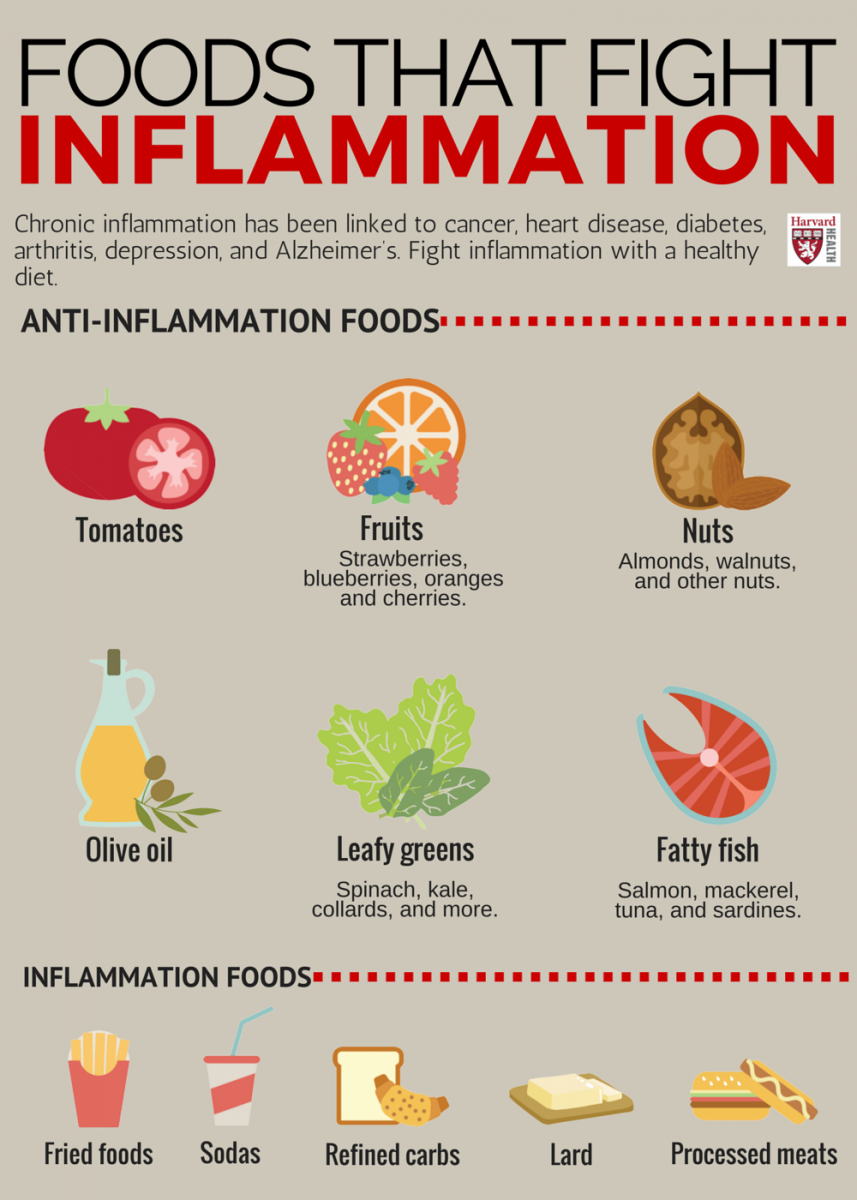
What are the 22 Top Superfoods? (Including benefits)
There are more than 22 Superfoods but today we will focus on just 22 of them and briefly mention the superfoods benefits of each group.
These 22 superfoods are:
- Superfoods that are often used in superfood powders and protein superfoods powders.
- Or Superfoods that are easy to add to daily meals, as toppings to breakfast bowls, salads, soups, juices, and smoothies.
- Or Superfoods that can easily be bought at your local farmers’ market.
Some of them will be familiar to you, some you may be reading about here for the first time. So let’s begin by listing these top 25 superfoods and describing briefly what they have that makes them so beneficial to maintaining a healthy body, mind, and soul.
List of Superfoods and their Benefits
Berries
1. Goji Berries
1a) Botanical name: Lycium barbarum.
1b) Where do they come from? Goji berries are native to China.
1c) What properties do they have?
Studies show that goji berries improve macular degeneration.
Studies have also shown that taking goji berry juice daily will:
- Improves mental acuity and cognitive function
- Improves quality of sleep and ease of waking up.
- Improves digestion
- Increases energy
- Elevates mood to calmness, focus, feelings of contentment.
- Anti-ageing – may reduce risks of atherosclerosis
- May reduce the risk of Type 2 Diabetes
1d) What nutrients are they known for?
Vitamin A -1 serving (28g) delivers 340% of the daily vitamin A quota.
High fiber, low fat.
1e) Polyphenols:
- Anthocyanidins
- Zeaxanthin
- Polysaccharides in the form of proteoglycans
1f) How do you add them to your diet?
- Add dried fruit to cereals, muesli, porridge, yoghurt, smoothies, desserts
- Drink juice.
- Add powdered form to smoothies, yoghurts.
1g) Precautions:
Don’t take goji berries when you are taking insulin, warfarin, or other blood-thinning medication.
2. Blueberries
2a) Botanical name: Vaccinium species (many varieties and cultivars exist)
2b) Where do they come from? North America
2c) What properties do they have?
Blueberries are:
- Anti-adhesive
- Anti-carcinogenic
- Anti-inflammatory
- Antioxidant
2d) Polyphenols:
Blueberries are loaded with
- resveratrol.
- resveratrol.
- bioflavonoids.
- anthocyanins.
- proanthocyanidins.
Studies show that processing blueberries do not affect the health benefits they have to offer.
2e) How do you add them to your diet?
Eat them fresh. Add to smoothies, yoghurts, desserts, cereals, and porridge.
Bake with them.
Use the powdered form in smoothies or to flavour baked goods.
Use frozen berries in smoothies and in desserts.
3. Maqui Berries
3a) Botanical name: Aristotelia chilensis
3b) Where do they come from? South America
3c) What properties do they have?
Maqui berries benefit the heart, lungs, eyes, vascular system, lipid levels, and blood sugar levels.
They have strong anti-inflammatory properties and of all the superfood berries, maqui berries have the highest level of antioxidants. It is these properties that assist in the reduction of platelet activity and vascular inflammation. These factors alone account for blood sugar levels being stabilised, which means they may aid weight loss and can assist in treating obesity and T2D (Type 2 Diabetes).
By reducing the inflammation in the blood vessels the risk of CVD (cardiovascular disease) decreases and the blood vessels in the lungs are strengthened, which also means the immune system is being supported.
3d) Polyphenols:
Maqui berries “superpowers” lie in their polyphenolic compounds known as delphinidin and cyanidin. Delphinidin has powerful anti-inflammatory properties.
Studies have shown that the bioavailability of these compounds is effective enough to warrant further studies on the health benefits of Maqui berries
3e) How do you add them to your diet?
Maqui berry extract is available to take as a supplement, and it is these extracts which have been used in trials and studies to determine the efficacy of Maqui berries.
It’s also available as a superfood powder, to be added to desserts, yoghurts, smoothies, and baked goods.
Nuts
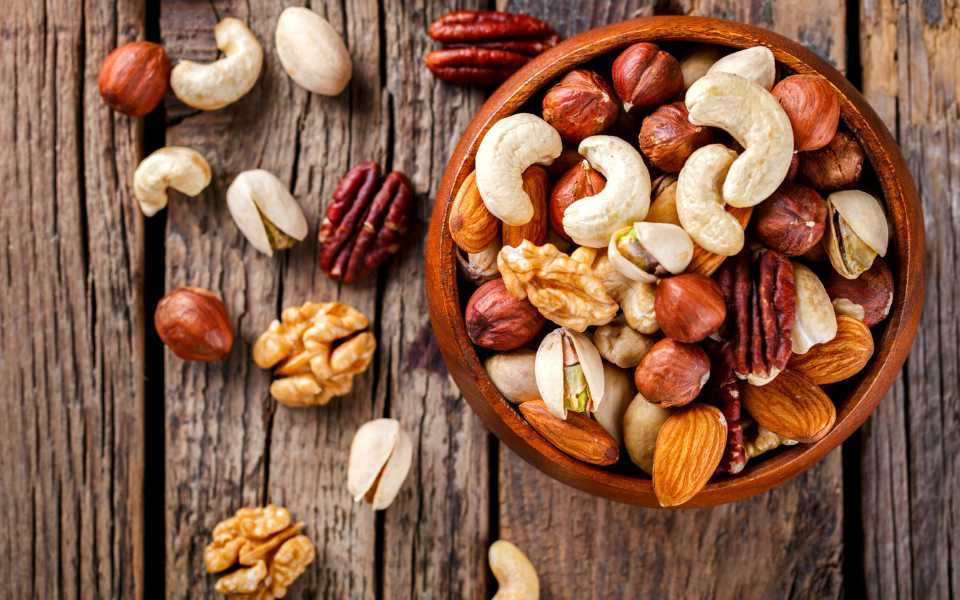
4. Almonds
4a) Botanical name: Prunus dulcis, syn. Prunus amygdalus
The almond is actually a drupe, not a nut, but it is described as a tree nut. It is related to the peach.
4b) From: Native to Iran but widely cultivated in countries like the United States, Australia, and Spain.
4c) Properties:
Almonds have anti-inflammatory, anti-hepatotoxicity, and immune-boosting properties. They regulate blood sugar, cholesterol, and hormones. They protect from heart disease, are beneficial to circulation, and thanks to their high fibre, also aid digestion, which reduces the risk of colon cancers and other GI (gastrointestinal) tract ailments.
They are high in potassium, magnesium, and folic acid.
4d) Polyphenol: High in Vitamin E, a powerful antioxidant.
4e) How do you add them to your diet?
Almond milk – a highly nutritious dairy-free alternative
Almond flour – a gluten-free substitute for wheat and other flours containing gluten.
Almond butter – a rich, creamy dairy-free alternative to butter.
Use almonds, flaked, blanched, whole, crushed, raw, or roasted. Add to soups, salads, breakfasts, and desserts. Great as a snack, on their own.
5. Coconuts
5a) Botanical name: Cocos nucifera
5b) From: Tropical regions, like Indonesia and the Philippines
5c) What properties do they have?
Coconuts are said to be antibacterial and immune-boosting. Coconut, and specifically coconut oil is high in MCTs (medium-chain triglycerides). This means it may lower cholesterol and stabilise insulin.
5d) Polyphenols:
- gallic acid,
- kaempferol,
- quercetin,
- ferulic acid and more.
5e) How do you add them to your diet?
Cook with coconut oil. It has a high smoke point. Use coconut as flour, or as flakes. Add to Indian and Thai dishes. Bake with it. Great in smoothies, as coconut milk. When you buy coconut oil, make sure you get raw extra virgin coconut oil. When you buy coconut oil, make sure you get raw extra virgin coconut oil.
Seed
6. Chia Seeds
6a) Botanical name: Salvia hispanica
6b) Where do they come from? Indigenous to central and southern Mexico
6c) What properties do they have?
Chia seeds are loaded with fiber and healthy omega-3 fatty acids.It has properties that may reduce blood pressure, cholesterol, and blood sugar. This means they are good for the heart, good for diabetics, and good for anyone who needs to increase their daily fibre intake, which should be between 25-35g daily. They may also be beneficial to brain function.
6d) Polyphenols:
Chia contains tocopherols, gallic acid, omega 3 linolenic acids. It has been proven, in studies, that chia is 42% higher in antioxidants than flax seeds.
6e) How do you add them to your diet?
Chia can be added to health drinks, smoothies, desserts, salads, baked goods, cereals, oats, and many other dishes. When water is added it can swell to 10x its own weight. It can be used like this instead of butter.
7. Hemp Seeds
7a) Botanical Name: Cannabis sativa
7b) Where do they come from? Grown almost all over the world, the hemp plant has Asian origins.
7c) What properties do they have?
Studies show promise in the use of hemp seeds for neurodegenerative diseases, heart disease, and cancer. Hemp seeds contain lignanamides, an antioxidant and acetylcholinesterase inhibitor. Acetylcholinesterase are enzymes that cause damage to neurons in the brain. It is considered a nutraceutical due to its high level of polyphenolic compounds. It contains edestin, a highly digestible protein. This gives the seeds a 66% bio-availability, peanuts only have a 49% bio-availability.
Hemp seeds are protein-based and are ideal for use in vegan protein superfood powders. They contain all essential amino acids, making it a complete protein. It also contains omega 3, 6, and 9 fatty acids.
7d) Polyphenols
Hemp seed and the hemp plant contain a wide variety of
- flavonoids,
- tocopherols,
- carotenoids,
- phytosterols,
- lignanamides,
- glutamic acid
7e) How do you add them to your diet?
Hemp seeds can be bought already hulled and ready to use. Add to smoothies, protein superfood powders, desserts, salads, soups, and baked goods. Add to yoghurt and even green juices.
8. Linseed/Flaxseed
8a) Botanical name: Linum usitatissimum
8b) Where do they come from? They grow in cooler climates and appear in Asian and African dishes
8c) What properties do they have?
High in omega 3 fatty acids, they are anti-inflammatory and therefore may reduce the risk of CVD. Helps with arthritis, asthma, and allergies. Good for skin, eyes, and hair. High fibre aids digestion and stabilises blood sugar levels. May help prevent cancer and improve fertility. Good for weight loss.
8d) Polyphenols:
- glucosides
- alpha-linolenic acid
- lignans
8e) How do you add them to your diet?
Linseed, also called flax, is best bought whole and if you’re wanting to grind it into a flour do so just before using, as it can go rancid if not stored in a fridge. Linseed flour is excellent for gluten-free baking as it has natural binding properties. Excellent to sprout.
Fruit
9. Pomegranate
9a) Botanical name: Punica granatum
9b) Where do they come from? Iran, India, Mediterranean
9c) What properties do they have?
Studies show that pomegranates are anti-inflammatory, anti-carcinogenic, and antioxidant. They may reduce high blood pressure, high cholesterol, and reverse oxidative stress. Pomegranate seeds may improve metabolic health thus making it a beneficial superfood for weight loss
9d) Polyphenols:
- Ellagic acids and hydrosoluble tannins.
- Phenolic acids and amino acids, specifically proline, methionine, and valine.
9e) How do you add them to your diet?
Pomegranate juice is readily available these days. You also get pomegranate vinegar which has health benefits similar to that of apple cider vinegar. Add the ruby seeds to salads, desserts, and smoothies.
10. Baobab
10a) Botanical name: Adansonia digitata
10b) Where do they come from? Africa and Madagascar
10c) What properties do they have?
The Baobab has to be one of the most potent superfoods around. It has 6 times more vitamin C than oranges and is high in calcium, potassium, and magnesium. It’s an antihistamine, antiviral, antibiotic, antipyretic, anti-inflammatory, analgesic, and antimicrobial. It is also hepatoprotective, meaning it protects the liver.
10d) Polyphenols:
- Flavanols; including kaempferol, quercetin, triterpenoid.
- It also has saponins and sterols.
10e) How do you add them to your diet?
This is one fruit you won’t find in the farmers’ markets. Fortunately, it’s available in powder form. It can be added to smoothies and green juices for extra energy.
10f) Precautions:
It is safe to take up to 4 servings a day. Even pregnant women can take it. But it’s advised not to take while breastfeeding due to the capacity it has for mineral absorption and the danger of heavy metals being absorbed by the newborn. Don’t give it to children under 2. Do not take baobab powder if you are taking tetracycline antibiotics.
11. Dates
11a) Botanical name: Phoenix dactylifera
11b) Where do they come from?
It is thought that date palms originated from the region between Egypt and Mesopotamia. Today many date palms are found growing in North Africa and the Middle East.
11c) What properties do they have?
A study was done on the polyphenols in dates and their effect on gut ecology. Colon health is enhanced by increasing bacterial growth and stopping colon cancer cells from spreading
11d) Polyphenols:
Flavonoid aglycones and anthocyanidin petunidin. Dates have the essential amino acid, tryptophan. Tryptophan is converted by the body into serotonin. Serotonin is a “feel good” hormone.
11e) How do you add them to your diet?
Dates can be bought fresh or dried. Use them in salads, smoothies, curries, baking and raw vegan desserts.
Roots and Rhizomes
12. Ginger
12a) Botanical name: Zingiber officinale
12b) Where do they come from? Southeast Asia
12c) What properties do they have?
Studies show that ginger heals the gut’s microbiome. It has anti-inflammatory and anti-carcinogenic properties.
12d) Polyphenols
Ginger has caffeic acid and gingerols.
12e) How do you add them to your diet?
You can cook with ginger, use the powdered ginger in smoothies, teas, and baked goods.
13. Turmeric
13a) Botanical name: Curcuma longa
13b) Where do they come from? Southeast Asian countries
13c) What properties do they have?
Anti-inflammatory, contains iron to treat anemia, anti-carcinogenic, combats obesity, chronic fatigue, neurological function, anxiety, antidepressant, anti-microbial, reduces blood pressure and risk of CVD.
13d) Polyphenols:
- curcumin,
- ukonan-A,
- diarypeptanoids,
- tumerin,
- carotenoids, and more.
13e) How do you add them to your diet?
Use the rhizome by grating it into curries, soups, and stews. Add to juices and smoothies. It may be wise to get a good quality supplement, in capsule form, to reap the full benefits of this “wonder” spice.
Important: Always add ground black pepper when using turmeric it increases the efficacy by 2000x!
14. Maca Root
14a) Botanical name: Lepidium meyenii
14d) Where do they come from? Peru
14e) What properties do they have?
Maca root is an adaptogen so it helps the body to defend itself against infections, hormonal imbalances, and stress. It plays a large part in sexual health for both men and women.
Treats chronic fatigue syndrome, increases libido and fertility in men and women, balances hormones, and repairs the glandular system. It brings mental clarity.
For impotence in men and PMS (premenstrual syndrome) in women. A good HRT(hormone replacement therapy) alternative.
14f) Polyphenols:
- alkaloids,
- trypterphene,
- phenolic compounds,
- glycosides,
- tannins,
- macamides,
- macaenes.
14g) How do you add them to your diet?
Maca root in powder form is a light brown colour and has a slightly sweet taste. It gets added to smoothies. Use as a topping on desserts, mix it into yoghurt, or take it as a medicine, by mixing 1 teaspoon into a glass of water, juice, or milk.
Greens
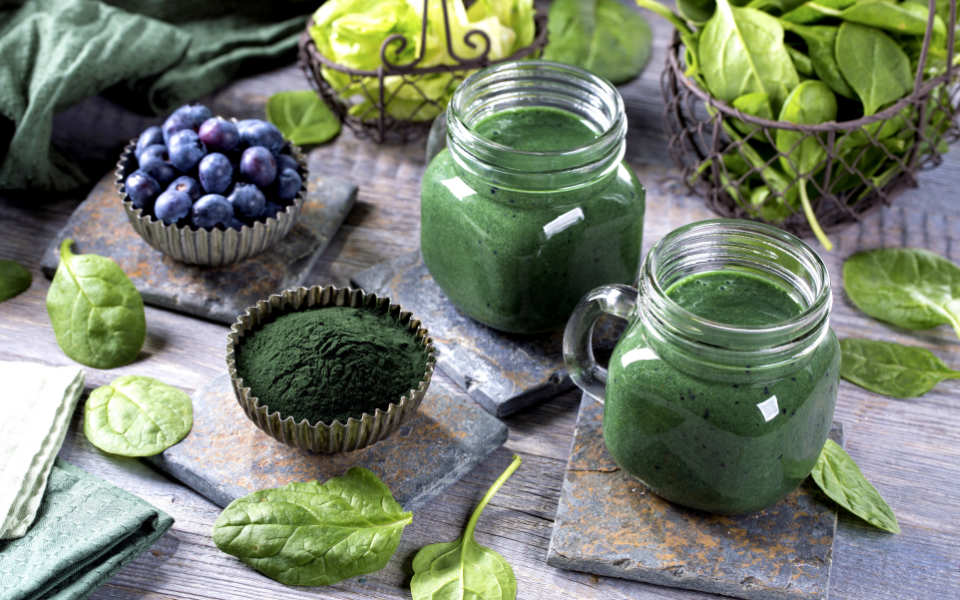
15. Dark Leafy Greens and the Cruciferous Family
15a) Botanical name: Cruciferous family and Non-Cruciferous family
15b) Where do they come from? Around the globe
15c) What properties do they have?
Greens are a wide range of leafy vegetables with immense benefits to health and well-being. They are high in fibre, iron, vitamins, and minerals. These low carb, low-fat vegetables are vital in keeping the digestive system working. They are anti-inflammatory, anti-carcinogenic and may reduce the risk of heart disease, due, in part, to the high fibre content.
15d) Polyphenols:
- glucosinolates,
- ascorbic acids,
- tocopherols,
- carotenoids
15e) How do you add them to your diet?
Add them raw, lightly steamed, or as green juices. Add to salads and soups and instant pots.
16. Moringa
16a) Botanical Name: Moringa oleifera
16b) Where do they come from? India
16c) What properties do they have?
Moringa has a higher bioavailability than cruciferous greens. It is loaded with antioxidants and is said to lower blood pressure and blood sugar levels. This means it can be used to treat diabetes. It may reduce the risk of heart disease and cancer.
16d) Polyphenols:
Quercetin, chlorogenic acid, and many other bioactive polyphenic compounds.
16e) How do you add them to your diet?
Take as a supplement or powder if fresh leaves are not available
Pods
17. Carob
17a) Botanical name: Ceratonia siliqua
17b) Where do they come from? Mediterranean
17c) What properties do they have?
Can be beneficial in cases of diabetes, cancer, diarrhea, and digestive problems. It is antioxidant and antiviral. Aids weight loss.
17d) Polyphenols:
24 polyphenol compounds, including gallic acid and flavanols.
17e) How do you add them to your diet?
Use as a chocolate substitute, use as a hot beverage, add to smoothies, yoghurt, desserts, and baked goods.
18. Cocoa
18a) Botanical name: Theobroma cacao
18b) Where do they come from? South America
18c) What properties do they have?
Cocoa is antioxidant, anti-inflammatory, and atherogenic. It’s bioavailability is increased if taken with carbs.
18d) Polyphenols:
- Catechins,
- flavanol glycosides,
- anthocyanins,
- proanthocyanidins.
18e) How do you add them to your diet?
Cocoa is one of the most versatile superfoods around. Only dark, raw chocolate is beneficial.
19. Mesquite
19a) Botanical name: Prosopis species
19b) Where do they come from? Southwestern United States
19c) What properties do they have?
Anti-ageing, anticarcinogenic, reduces risk of CVD, T2D, and has a low GI (glycaemic index)
19d) Polyphenols:
Loaded with antioxidants, very high in potassium, protein and fibre.
19e) How do you add them to your diet?
Mesquite is available in powder form and can be used as a sugar substitute, add to baking, and smoothies.
Teas
20. Green Matcha Tea
20a) Botanical name: Camellia sinensis
20b) Where do they come from? East Asia
20c) What properties do they have?
Matcha tea is tea that has been grown in the shade for 3-4 weeks before harvesting. The veins and stems are taken out and the leaves are crushed into a fine powder. It is loaded with antioxidants. And has all the benefits of a superfood.
20d) Polyphenols: Catechins
20e) How do you add them to your diet? Drink as tea.
Vegetables
21. The Legume Family as Superfoods (Bean family)
21a) Botanical name: Beans are part of the Legume family
21b) Where do they come from? All over the world
21c) What properties do they have?
They are high in proteins and amino acids. They are high in fibre and full of antioxidants. Good for weight loss, digestive problems, and disease prevention.
22d) Polyphenols:
- Catechins
- Kaempferol
- Genistein
Peas, soy, lentils, peanuts, and a whole host of other plants make up this family of plants. They are not only superfoods to eat but are vital as part of permaculture farming. They have the ability to “fix” nitrogen into the soil, thus preparing the soil for the next crop to come.
23e) How do you add them to your diet?
The most underestimated plant around. Seen as a “poor man’s food” the humble bean is not flashy, but it is a powerful complete protein, and a complex carbohydrate. High in fibre. Beans are as versatile as they are varied.
22. The Allium Family (Onion family)
22a) Botanical name: Allium species
22b) Where do they come from? All over the world
22c) Properties:
The onion family is known for being powerful antibiotics, antimicrobial, anti-cancer
22d) Polyphenols:
- quercetin,
- cyanidins,
- delphinidins.
22e) How do you add them to your diet?
Onions are very versatile and can be added to soups, salads, cooked dishes, dips, and sauces.
25 Additional Superfoods – Fresh and Whole Superfoods
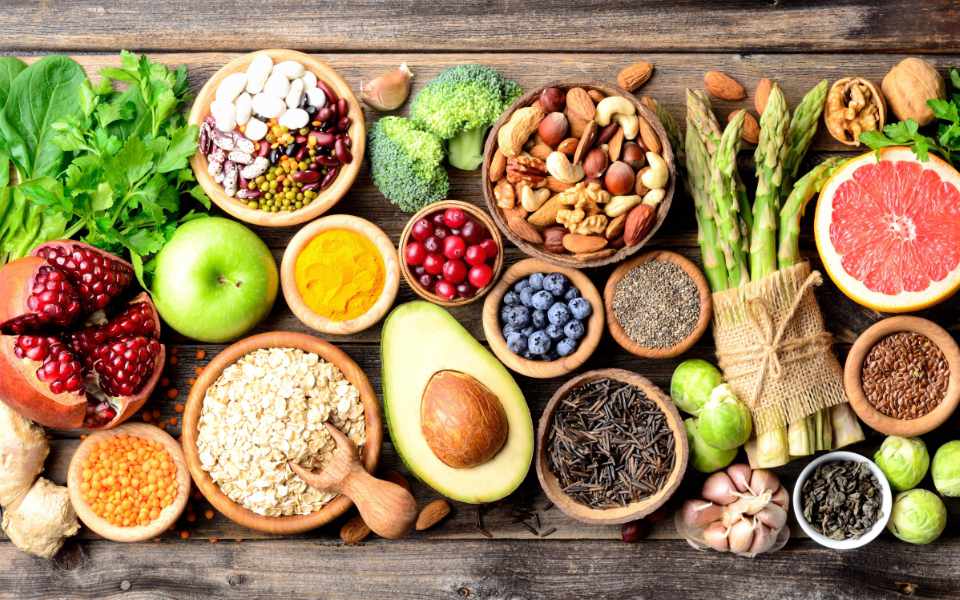
Here is an additional list of superfoods. Chosen for their high antioxidant levels, nutrient-density, and overall health benefits, including anti-inflammatory properties. Adding these foods to your daily diet guarantees an improvement in general health, over time.
Eating fresh, whole foods support all the systems within the body. Eating foods that reduce inflammation and boost immunity promote longevity, aid weight loss, and keep blood and lipid levels stable, allowing the body to function properly. This reduces the risk of diseases like metabolic syndrome, CVD, and T2D.
1. Avocados
2. Bananas
3. Salmon (oily fish)
4. Quinoa
5. Apricots
6. Olives
7. Figs
8. Seeds: Pumpkin, sunflower, sesame,
9. Grapes
10. Sweet Potatoes
11. Bulgarian Yoghurt
12. Eggs
13. Mushrooms
14. Apples
15. Oranges
16. Nuts: walnuts, cashews, pistachios, brazil nuts, hazelnuts, pecans, macadamia,
17. Tomatoes
18. Beets
19. Carrots
20. Strawberries
21. Kiwi Fruit
22. Papaya
23. Capsicum family
24. Olives
25. Milk
Superfoods for Diabetics
The following foods are suitable for diabetics who want to follow the superfoods diet plan.
1. Non-Starchy Vegetables (most veggies from the Crucifera family)
- Broccoli
- Cauliflower
- Kale
- Spinach
- Bok choy
- Garden cress
- Cabbage
- Mustards
- Brussel sprouts
2. Oranges and citrus fruits
3. Grains and lentils
4. Greek or Bulgarian yoghurt
5. Tomatoes
6. Berries
7. Nuts and seeds
8. Leafy greens and other green veggies
9. Fish
10. Beans
11. Onions
12. Mushrooms
In Conclusion
Superfoods are generally regarded as mainly plant-based, nutrient-dense, antioxidant, and beneficial. These foods support and boost the immune system, allowing the body to fight infections and maintain optimal health.
Salmon, eggs, dairy and certain meats are also highly nutritious and beneficial to overall health. But they do not form part of the colour chart that forms the basis of the Superfoods Diet.
Adding 7-10 servings (daily) of plants from the different colour groups help people to eat their way to better health.
